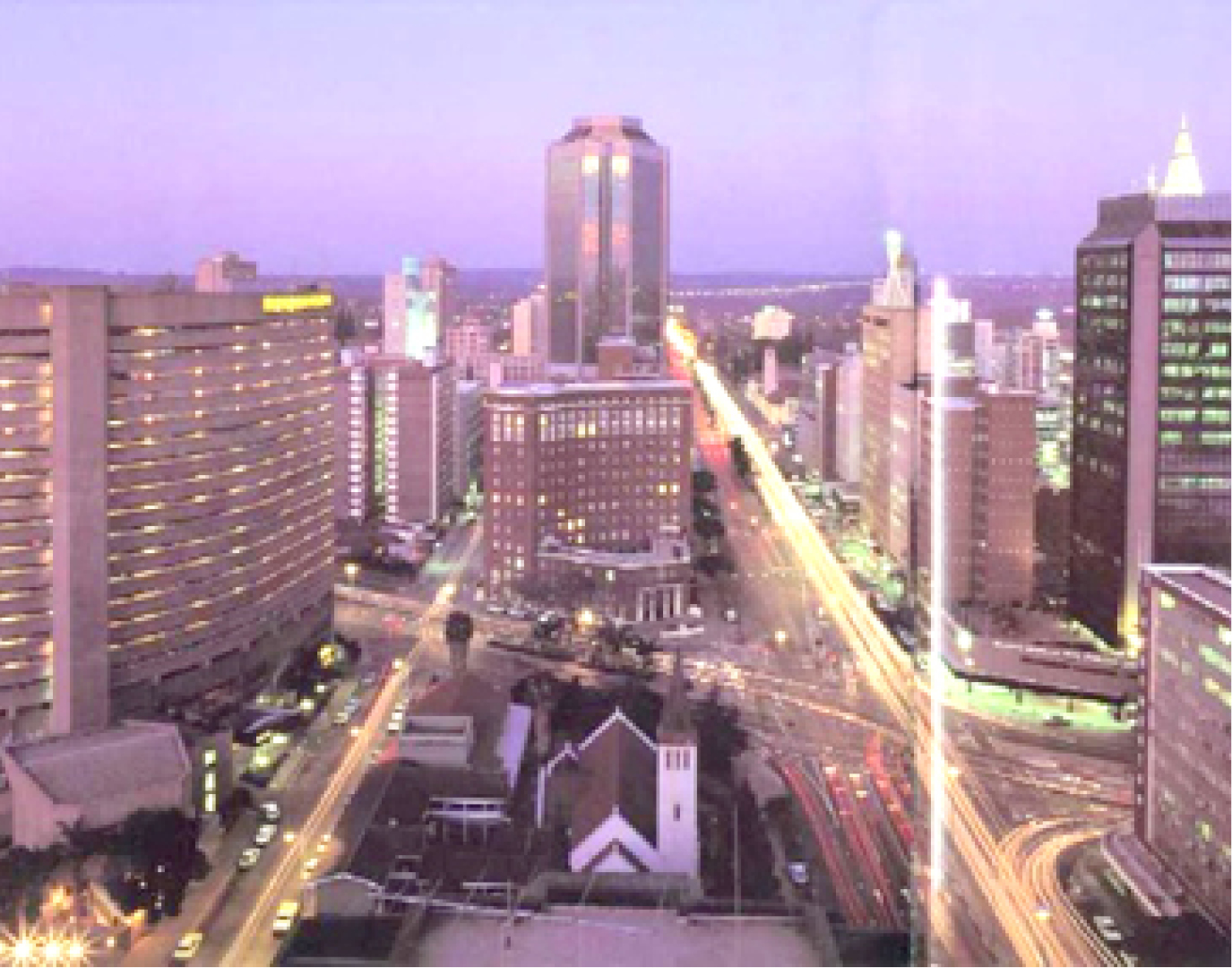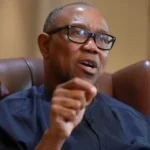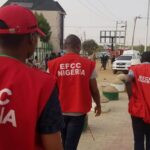Harare, August 1999, inside The Queens Dale Sports Club, a smoky writers’ and journalists’ hangout located on Chiremba Road, arguably one of Harare’s best pubs for a literary evening. Apart from the fact that Chenjerai Hove, one of Zimbabwe’s leading poets regularly performed there; the club is also reputed to have a good standing band and lovely barbecue.
Apart from Chenjerai Hove, other Zimbabwean poets lined up for the evening were Chirikure Chirirkure, Shimmer Chinodya, Memory Chirere, as well as Virginia Phiri. On the band stand was Albert Nyanthi and the Imborgi Band, while the Botswana poet and saxophonist, Keineetse Keineetse, as well as solo guitarist, Patricia Matongo, was to give support.
After paying the entry fee of Zim$50 (about N150.00), I found myself in the happy company of poets, musicians, journalists and other interesting guests. To start the evening, Patricia Matongo gave us renditions of some old classical pieces, such as Cera Cera and Farewell Jamaica, among others. Following closely on Patricia’s performance was my colleague and companion during the trip, 
Lola Shoneyin, with readings from her poetry collection: ‘So All The Time I Had Been Seating on An Egg.’ As usual, Lola’s readings tickled the crowd so much so that they kept asking for more.
Harare, the Sunshine City of South Africa, was founded in 1890 by Ceecil Rhodes. The city was formerly known as Salisbury, the capital of rebel leader Ian Smith’s Rhodesia. Since gaining independence in April 18, 1980, Zimbabwe has continued to grow with wide variety of interesting architecture, making it an attractive and modern city.
It is easy to fall in love with Harare. As our taxi took off from the international airport, we were welcomed to the city by the Freedom monument, a huge concrete arch that straddled airport road. This was followed by a clutch of signs from Rotary and Round table and the Lions Club welcoming us to Harare. Further, on airport road, a tidy facility surrounded by barbed wire announced the home of the One Commando Battalion.
The beauty of the city continued to astound a new comer as one ventured into the suburbs where affluent Zimbabweans had their large villas complete with swimming pools and tennis courts. Lining the streets were canopies of Jacaranda and Flamboyant trees, all adding to the spectacle of an African city with an European face. This affluent look was more obvious in the highbrow area of Avondale, Borroughdale and Mount Pleasant. Expectedly, the inhabitants of these areas were mostly white Zimbabweans, who I understood at the time, still controlled the economy of this 10million populated country.
“The economy is in the hands of the white who still hold key positions in the country,” an African diplomat I met at the Monomotapa Hotel in downtown Harare remarked. “And although the whites make up less than 10per cent of the population, they still control and own over 80per cent of the land,” the man added.
A drive round the countryside showed how much land is actually in the hands of the whites.
For a country with only six months of rainfall, it is remarkable how well irrigated the farmlands were. “Every district of the country has a dam for its water supply,” Prof Femi Odesanmi, my former teacher at the Obafemi Awolowo University (O.A.U), Ile-Ife and now a professor of Forensic Medicine in the University of Zimbabwe said as he took me round the lovely Zimbabwe countryside. There were miles of farmlands filled with lush and green ridges of cabbage, vegetables, wheat and apples.
“The main economy of the country is agriculture,” Odesanmi continued as we ventured into another area with lush acres of pine trees, which I’m told is for furniture and export. Also, quite notable were well-fed cattle, fat like baby elephants, all grazing on the rolling meadows. As I kept admiring the well-fed cattle, desanmi said, “All these farms have their own veterinary doctors, who are well paid.”
We soon reached the town of Mazowe, a distance of 47 kilometres from Harare. Mazowe, I was told, is famous for oranges. We stopped at the visitors shop in one of the farms at Mazowe for a rest. As we savoured the cool breeze from the nearby dam, we sipped ice cold fresh orange juice that tasted heavenly.
“Some of these white farmers are so rich that they have helicopters and private jets,” Prof Odesanmi said.
Asked about the problematic issue of white ownership of lands, he explained, “It’s a bit tricky. While Mugabe’s government wants the whites to release more lands to blacks, some officials of the local labour union are not too eager for a change in land ownership. They feel that once the land gets into the hands of their fellow blacks, black farm workers may suffer. Don’t forget that most white farmers have houses and schools for their black workers. The labour union is afraid that black farm owners may not be able to provide similar facilities for their kin and kith.”
As we left Mazowe, more acres of orange trees came to view. So massive were the farmlands that it was difficult to see their limits from the road. All these beautiful sceneries continued till Glendale, which is 57 kilometres outside Harare. At Bindura, which is 87 kilometes from Harare, we came across more acres of citrus trees, particularly the nurseries, where the shoots of the plant were planted. Then came farmlands of cotton and tobacco, which I was told had one of the best qualities in the world. Everywhere was well irrigated by remote-controlled sprinklers all day, all week.
The issue of land ownership was still on our minds as we later turned back to Harare. “President Mugabe will ultimately have to bargain with the white over the issue. While the blacks are insisting that the whites should return their lands to them, the latter are insisting on being compensated for what they have built and grown on the land,” Professor Odesanmi said.
 Later that evening, I joined other Nigerians who had come for the Zimbabwe Book Fair at the home of Mr. Olu Lipede, the information and cultural attaché at the Nigerian Embassy in Harare. Olu and his charming wife, Lizzy, decided to entertain us to an evening of Nigerian food and music at their No 2 Howard Close, at the highbrow Mount Pleasant area of the city. Writers, publishers and some embassy staff, including the acting High Commissioner, Ms Hadja Mustapha, were all there. As expected, some of the writers – Karen, Wale, Lola and Mujidah – did some reading before the wonderful evening came to an end.
Later that evening, I joined other Nigerians who had come for the Zimbabwe Book Fair at the home of Mr. Olu Lipede, the information and cultural attaché at the Nigerian Embassy in Harare. Olu and his charming wife, Lizzy, decided to entertain us to an evening of Nigerian food and music at their No 2 Howard Close, at the highbrow Mount Pleasant area of the city. Writers, publishers and some embassy staff, including the acting High Commissioner, Ms Hadja Mustapha, were all there. As expected, some of the writers – Karen, Wale, Lola and Mujidah – did some reading before the wonderful evening came to an end.
In order to have a balanced view of Zimbabwe, albeit through the face of Harare and its outlying towns, my host graciously agreed to take me to the black township so I could see how our brothers and sisters really lived. As we moved out of Harare, the beautiful villas, with their expansive compounds, gradually gave way to adobe two-bedroom houses and crammed high rise flats, with the laundry hanging out of the windows and the railings. “This is the real Africa,” I muttered.
Although the roads in the neighborhood were tarred, they were not as well kept as what obtained in the city. As we moved, we came across big passenger buses, which I was “Although apartheid is officially outlawed, what we now have is economic discrimination, in the sense that only very few blacks can afford to live in the highbrow areas of the city due to high rents,”, my host remarked.
As we entered the black township of Mabvuku, I noticed that in spite of the relative backwardness of the area, the place was well organised. There were supermarkets, open markets, cinemas, as well as schools and hospitals. My host agreed with me that compared to many African towns, Mabvuku wasn’t all that bad. “They even have regular water and electricity supplies, as well as telephone services,” he added.
When I pointed out some columns of floodlights almost 30 feet high, Prof Odesanmi replied, “Those are security lights.” In order to reduce the incidence of crime, the floodlights are switched on at night to illuminate the whole place.
From Mabvuku, we moved to Mbare, another black township, which I was told is very notorious for crime. Before we entered the area, my host decided to put all our luggage into the booth of the car.
“This is a dangerous area to both blacks and whites. In fact, it is a no-go area to many because of the high crime rate,” he said.
Mbare was a slum with so much congestion that children had to play in the streets. As our car crawled along the street, I nervously took photographs, being careful not to attract the attention of the residents, who eyed our posh-looking car suspiciously.
“Mbare used to be a one bedroom dormitory for black male workers who must leave Harare by six every evening. It was meant for the workers to stay during the week before going to the homelands at month end to give their families money for their upkeep,” Professor Odesanmi said. It was after independence when the nefarious practice of segregation was cancelled that people flooded to Mbare and congested the place. “Even the police are afraid of coming to Mbare to look for thieves,” my host added.
In spite of the notoriety attributed to the Mbareans, I was surprised to see a group of Christians as they prayed on an open field. The Apostolics, as this group was called, were in their red and white robes. They practised a religious cocktail, which is a combination of African animism and selected morsels of Christianity, mostly from the Old Testament. I could see members of the sect getting into a frenetic dancing and clapping sessions.
On a sunny Monday morning, Lola Shoneyin and I took a stroll to downtown Harare. Starting from the venue of the book fair, the Harare gardens, a beautiful well landscaped expanse of land with a canopy of Jacaranda and flamboyant trees amidst a welter of fountains and park benches, we soon hit the Samora Machel Avenue, the main jugular of Harare, where we visited our friends at the APNET headquarters. From APNET, we connected Union Avenue, where we purchased some international telephone cards at the post office, then on to second street, Nelson Mandela Avenue, Robert Mugabe road to a cyber café located at the junction of second street and Kenneth Kaunda Avenue. As we traversed these tall, beautiful and majestic architectural masterpieces, we wondered how lucky Zimbabweans were to have had the white men for so long on their soil. “Everything works here,” Lola intoned as the streetlights, building lifts and telephones went on without any hiccup.
I was, however, to hear the other side of beautiful Zimbabwe later that evening. At a very crowded and smoky café, speakers, including Chenjarai Hove, all condemned what they termed government severe censorship of the press. As Hove put it, “The business of writing in Zimbabwe is a very risky one. A lot of sanctions are out and you dare not criticise our leaders. An innocent news item such as the president’s flu attack is never heard off. You can’t also write anything negative about industrial corporations so that the paper can still get adverts from such companies.”
Most Zimbabweans are also unhappy with their government, which they accuse of being very corrupt. Ten years ago, the Zimbabwean dollar exchanged for US$10. However, because of the country’s current engagement with the South Africa Defence Council (SADC) activities in the Congo where the country spends an average of $1million US per day, the exchange rate has plummeted to Zim$38 for one US dollar.
“The country has been so badly managed that we now live on handouts from foreign agencies,” observed a Zimbabwean writer.
One important topic that cannot escape the attention of a visitor to Zimbabwe is the issue of violence to women. On the radio, television, posters, banners, the screaming headline tugs at the heartstrings. At a seminar organised by the Zimbabwean UN Country team on Thursday, August 5, at the Harare Gardens, speakers presented emotionally-laden statistical data. Eight out of 10 deaths from women are through violence. One in every 4 Zimbabwean (25per cent) are HIV positive, out of which 42per cent are women. For every six men with HIV, 5 women are infected. Among pregnant patients, 30per cent are HIV positive. The seminar thereafter advocated empowerment of women through education on HIV/AIDS, as well as the education of boys on how to respect girls and practise protective sex.
Also important was the attitude of Zimbabweans to Nigerians living on their soil. The general opinion of Nigerians is that the average Zimbabwean has an inferiority complex to Nigerians, and as such, tries at every point to put a Nigerian down. Yet, other Nigerians such as Prof Odesanmi, who is also the president of Nigerian Residents in Zimbabwe, feels that the country has brought this problem on itself due to our bad global image. I also had a taste of this when, upon learning that I was from Nigeria, two Zimbabwean youths asked me for cocaine.
This pervasive view of Nigerians as drug traffickers is not restricted to Zimbabwe alone. It extends all over East and South Africa. On our way to Harare, our Kenya Airways flight had a stopover in Nairobi where we were expected to pass the night in a hotel. However, while other passengers were allowed into Nairobi, we were refused entry visas. It was only after further enquiries that we were informed that Nigerians were so treated because of our bad reputation as drug traffickers.
To conclude my visit, I thought it appropriate to visit the medical school attached to the University of Zimbabwe. I found myself tagging along with my host to The Parireyantwa Hospital at Avondale. The hospital is a 500-bed facility for the training of doctors. Formerly called Godfrey Huggins Hospital, it was named after Dr. Parireyantwa, the first Zimbabwean black doctor after independence in 1980. I was also informed that the late Dr. Parireyantwa’s son, David, who is currently the deputy minister of health, was trained at the University of Lagos. “This used to be a predominantly white hospital,” Prof. Odesanmi informed me as we went round the very clean and well managed facility.
As I prepared for the homeward trip, I decided to take another stroll through downtown Harare to savour the beauty, peace and orderliness of this colorful city, and hoped I would have the opportunity to go back to the Sunshine City.
Dr Okediran, a Nigerian writer wrote this article after his visit to Zimbabwe in August 1999

 Join Daily Trust WhatsApp Community For Quick Access To News and Happenings Around You.
Join Daily Trust WhatsApp Community For Quick Access To News and Happenings Around You.


